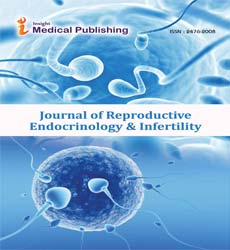Gonadotropin-Releasing Hormone Analogs in Reproductive Endocrinology and ART Protocols
Tobias Jorsal*
Department of Gynecology, Capital University, Etimesgut Ankara, Turkey
Published Date: 2025-02-28Tobias Jorsal*.
Department of Gynecology, Capital University, Etimesgut Ankara, Turkey.
Corresponding author:
Tobias Jorsal,
Department of Gynecology, Capital University, Etimesgut Ankara, Turkey,
E-mail: tobias@jorsal.tr.
Received date: February 01, 2025, Manuscript No. ipjrei-25-20621; Editor assigned date: February 03, 2025, PreQC No. ipjrei-25-20621 (PQ); Reviewed date: February 15, 2025, QC No. ipjrei-25-20621; Revised date: February 22, 2025, Manuscript No. ipjrei-25-20621 (R); Published date: February 28, 2025, DOI: 10.36648/ipwhrm.10.1.68.
Citation: Jorsal T (2025) Gonadotropin-Releasing Hormone Analogs in Reproductive Endocrinology and ART Protocols. J Reprod Endocrinol Infert Vol.10 No.1: 68.
Introduction Gonadotropin-releasing hormone (GnRH) analogs, including agonists and antagonists, have become indispensable tools in reproductive endocrinology and assisted reproductive technology (ART). By modulating pituitary gonadotropin secretion, these agents provide precise control over ovarian stimulation, prevention of premature luteinizing hormone (LH) surges, and synchronization of follicular development. Their integration into ART protocols has not only improved success rates but also enhanced patient safety by minimizing risks such as ovarian hyperstimulation syndrome (OHSS). Understanding their mechanisms, clinical applications, and evolving roles remains crucial for optimizing fertility treatment outcomes [1].
Description GnRH agonists were the first analogs introduced into ART protocols and act by initially stimulating and subsequently downregulating pituitary gonadotropin release through receptor desensitization. This "flare effect" followed by suppression allows clinicians to control the timing of ovulation and prevent premature LH surges during controlled ovarian stimulation. Protocols using agonists, such as the long and short protocols, have been widely adopted in in vitro fertilization (IVF), offering predictable outcomes and improving oocyte yield. However, prolonged suppression and increased gonadotropin requirements are potential drawbacks that necessitate individualized patient selection [2].
In contrast, GnRH antagonists provide immediate suppression of gonadotropin release by competitively blocking pituitary receptors without an initial stimulatory phase. Their shorter duration of action makes them highly suitable for flexible and patient-friendly ART protocols. Antagonist-based regimens reduce the overall duration of ovarian stimulation, lower gonadotropin usage, and significantly decrease the risk of OHSS compared to agonist protocols. rather than human chorionic gonadotropin (hCG) provides an additional safety advantage,
particularly for high-risk patients. Beyond ART, GnRH analogs also play important roles in reproductive endocrinology for managing hormone-dependent conditions such as endometriosis, uterine fibroids, and precocious puberty. By suppressing estrogen or androgen production, they alleviate disease symptoms and improve fertility prospects in women with underlying gynecological disorders. Additionally, in male infertility, GnRH analogs combined with gonadotropin therapy may restore spermatogenesis in cases of hypothalamic hypogonadism. Thus, their utility extends well beyond ART cycles into broader applications in reproductive health reproductive endocrinology for managing hormone-dependent conditions such as endometriosis [5].
Conclusion
GnRH analogs have transformed the landscape of reproductive endocrinology and ART by offering reliable methods to control ovarian stimulation, prevent premature LH surges, and reduce treatment-associated risks. While agonist-based protocols remain effective, antagonist regimens have gained prominence due to their safety, flexibility, and reduced treatment burden. Continued refinement of protocols and the integration of personalized medicine approaches are expected to further enhance outcomes. Ultimately, GnRH analogs remain a cornerstone in optimizing fertility treatments and improving reproductive health across diverse patient populations.
Acknowledgement
None.
Conflict of interest
None.
References
- Dosiou C, Giudice LC (2005) Natural killer cells in pregnancy and recurrent pregnancy loss: Endocrine and immunologic perspectives. Endocr Rev 26: 44-62
Google Scholar Cross Ref Indexed at
- Jena MK, Nayak N, Chen K, Nayak NR (2019) Role of macrophages in pregnancy and related complications. Arch Immunol Ther Exp 67: 295-309
Google Scholar Cross Ref Indexed at
- Trundley A, Moffett A (2004) Human uterine leukocytes and pregnancy. Tissue Antigens 63: 1-12
Google Scholar Cross Ref Indexed at
- Petrikova J, Lazurova I (2012) Ovarian failure and polycystic ovary syndrome. Autoimmun Rev 11: A471-A478
Google Scholar Cross Ref Indexed at
- Chakraborty B, Byemerwa J, Krebs T, Lim F, Chang CY, et al. (2023) Estrogen receptor signaling in the immune system. Endocr Rev 44: 117-141
Open Access Journals
- Aquaculture & Veterinary Science
- Chemistry & Chemical Sciences
- Clinical Sciences
- Engineering
- General Science
- Genetics & Molecular Biology
- Health Care & Nursing
- Immunology & Microbiology
- Materials Science
- Mathematics & Physics
- Medical Sciences
- Neurology & Psychiatry
- Oncology & Cancer Science
- Pharmaceutical Sciences
